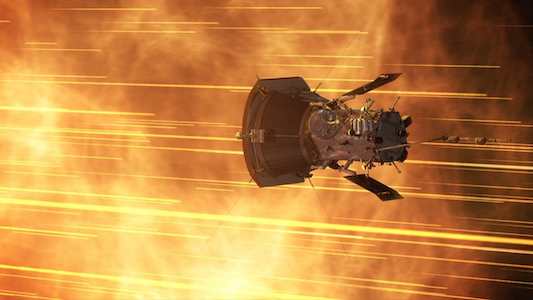Past Events
From BEC to CEO
Abstract: Can a PhD at CU Physics prepare you to start a company? Can a Post-Doc at NIST be the ticket to entrepreneurship? While the subject of research at these institutions may not be directly applicable to industrial problems—in my case, Bose-Einstein Condensation and quantum computing— the skill sets and tools you develop are on the critical path in preparing you to succeed in high-tech industry and even in starting a company.
TBA
Lab Website: https://irvine-lab.mit.edu/
Synopsis: Works with immunology, biotechnology, and chemistry to develop novel treatments directly involved with the modulation of the immune system. The lab focuses on 3 main aspects: smart materials and nanotechnology in the development of vaccines, nanomaterials-enabled immunotherapy, and tools for monitoring/manipulating the immune system.
Thermal Energy Transport at the Atomic and Single Molecule Scale
Lunch will be provided first and the talk will start at 12pm.
This is the second installment of the CU Phonon Club, a new group that focuses on making connections between different research teams on campus studying phonons.
Dispatches from the Sun: Physics of our Nearest Star Determined by the Parker Solar Probe Mission

Abstract:
The Parker Solar Probe spacecraft has traveled closer to the Sun than any other human-made object. It has measured in-situ magnetic fields, electric fields, thermal plasma, high energy particles, and interplanetary dust in the near-Sun solar wind. Most recently, it made the first in-situ measurements of the solar corona, dipping below the Alfven surface.
Quantization effects in semiconductor nanostructures and singlet fission in molecular chromophores for photovoltaics and solar fuels
Abstract: Hot carriers in semiconductors are electrons and/or holes that have energies greater than carriers that reside at the top and bottom of the conduction and valence bands, respectively; the latter carriers are in equilibrium with the lattice and have a temperature equal to the lattice (ambient) temperature. Hot carriers are created in semiconductors upon the absorption of photons with energies greater than the bandgap. The excess energy above the bandgap energy is in the form of kinetic energy.
First Laboratory Bounds on Ultralight Dark Photon Dark Matter from Precision Atomic Spectroscopy
Abstract: Ultralight bosonic dark matter has come under increasing scrutiny as a dark matter candidate that has the potential to resolve puzzles in astronomical observation. I demonstrate that high-precision measurements of time variation in the frequency ratios of atomic transitions achieve leading sensitivity to ultralight vector portal dark matter at low masses. These bounds are the first laboratory-based bounds on this class of dark matter models. I discuss further measurements that could enhance sensitivity to ultralight dark photons.
Laboratory experiments for the analysis of past and future space mission data
Bernd Abel (Leipzig University) in cooperation with A. Spesyvyi, J. Žabka, M. Polášek, F. Postberg, and A. Charvat
A dissipative quantum simulator of lasing dynamics at the few quanta level
Abstract: I will present our trapped-ion system with engineered competing dissipation channels, implemented independently on two ions of different specied co-trapped in the same potential well. We explore the phase diagram of the system, which is analogous to that of a (phonon) laser by precise control of the spin-oscillator couplings and the dissipative channels.
Geometric frustration, self-assembly, mechanics, and pathways to complexity
Abstract: Self-organized complex structures in nature, from hierarchical biopolymers to viral capsids and organisms, offer efficiency, adaptability, robustness, and multifunctionality. How are these structures assembled? Can we understand the fundamental principles behind their formation, and assemble similar structures in the lab using simple inorganic building blocks? What’s the purpose of these complex structures in nature, and can we utilize similar mechanisms to program new functions in metamaterials?
No Title Announced
Lab Website: https://www.fitzpatrick-lab.org/
Synopsis: Works with Cryo-EM to understand the structural basis of neurodegeneration and memory (amyloid fibres) as well as understanding protein aggregation. The Fitzpatrick lab has worked extensively on Alzheimers and more recently with the homotypic fibrillization of TMEM106B using light microscopy and Cryo-EM.
Solar Magnetic Fields Before and During Eruptions
Abstract: Space weather is largely caused by the activity of our Sun. Invisible yet powerful magnetic fields, created within the Sun, determine when and where the next solar eruption will happen. In this talk, I will discuss how advances in solar observations and data-driven models allowed scientists to understand flare magnetism in a lot more detail than ever before.
Single molecule tracking reveals phospholipase A2 activation by > melittin via membrane deformations
Anomalies in (2+1)D symmetry-enriched topological phases
Abstract: Topological phases of matter, like fractional quantum Hall systems, can host anyon excitations with fractional exchange statistics and fractional electric charges. More generally, when topological phases with anyons have global symmetries, anyons can carry fractional quantum numbers under those symmetries.




